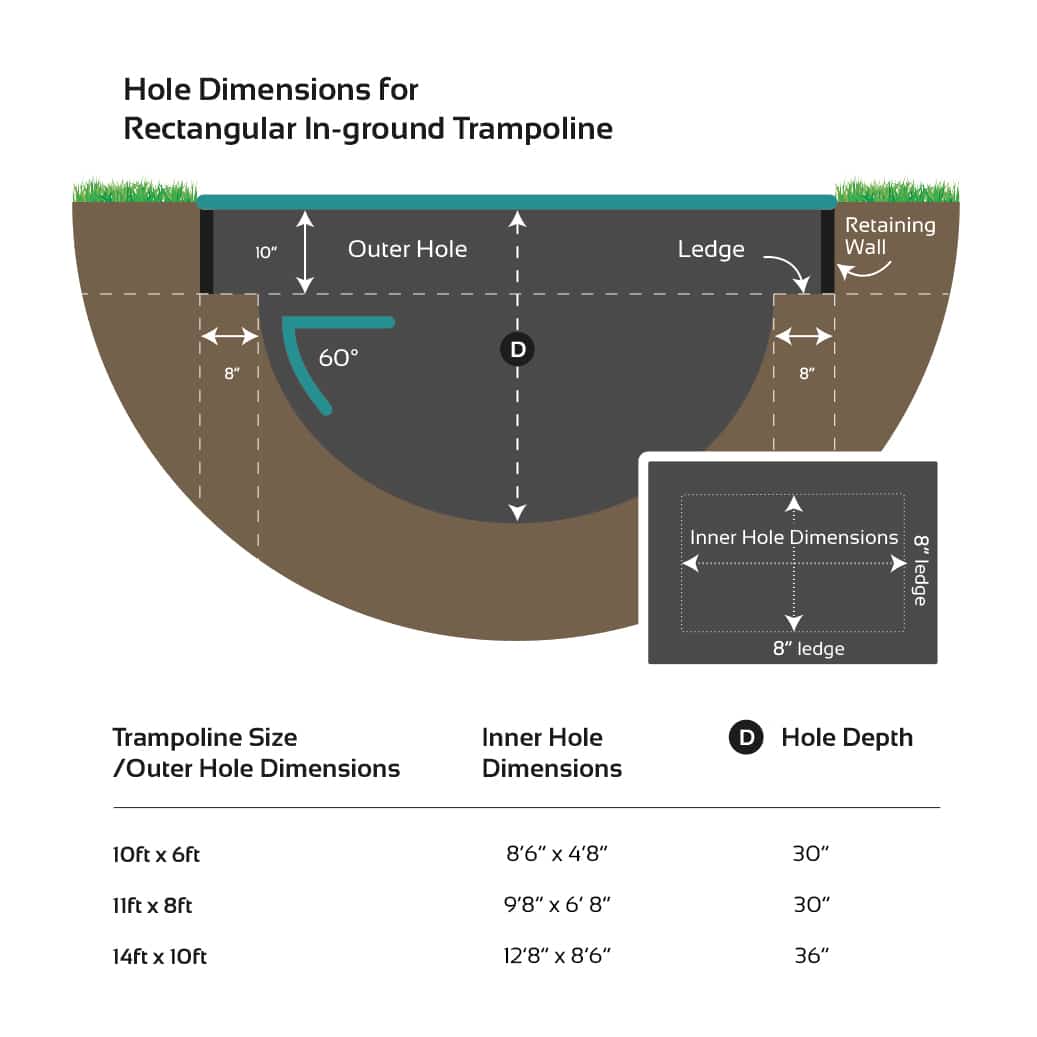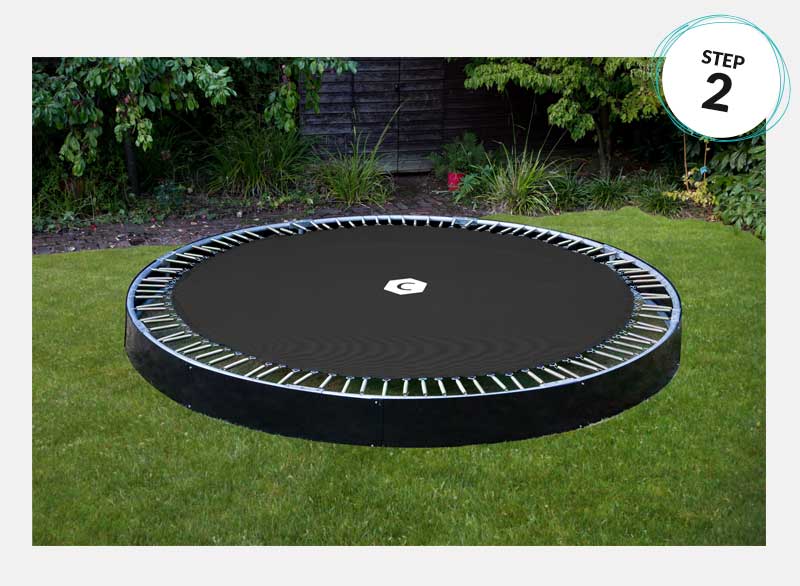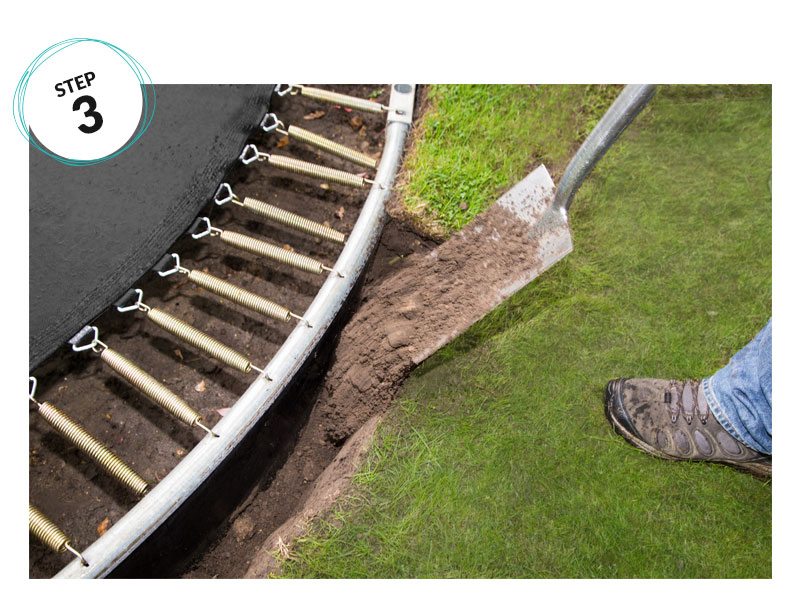Step 1: Dig the Hole
Mark out a hole that is a few inches wider in diameter than your trampoline. This is to give you a little extra room when you place the trampoline in the hole.
Dig out 10 inches of soil evenly across the entire hole. Then dig an inner hole in the middle that is 2ft or 24 inches less in diameter than the trampoline size in a bowl shape to a depth of 36 inches (about 3ft) for 12ft and 14ft trampolines and 30 inches (about 2ft 6 inches) for 8ft and 10ft trampolines. This will leave a ledge onto which the trampoline frame will sit.
Pro Tip
It's hard to be precise with the hole measurement - the extra few inches will make it easier for you. This extra space will be back-filled at the end. Keep some of your excavated top soil close by the hole for back filling.



Step 2: Assemble the Frame
Assemble the top and bottom sections of the trampoline frame, attach mat and springs, and fix the retaining wall to the outside of the frame.
Pro Tip
Attach springs at 12 o'clock position, then 6 o'clock followed by 3 o'clock and 9 o'clock first - this will give even tension and make it easier to fit the rest.
Step 3: Place the trampoline into the pit
Lift the trampoline into the hole and place it on the ledge, ensuring the frame is at the correct height. Then back-fill the gap outside the frame, compact the soil, and re-turf.
Pro Tip
Use the handle of your spade to compact the soil down as tight as possible when back-filling.


Step 4: Attach the Vented Pads
Finally attach the TDU vented pads to the frame & you're ready to enjoy your In Ground Trampoline!
Pro Tip
Use a long screwdriver to help push the elasticated toggles down between the trampoline frame and the retaining wall in order to secure the pads to the trampoline.

